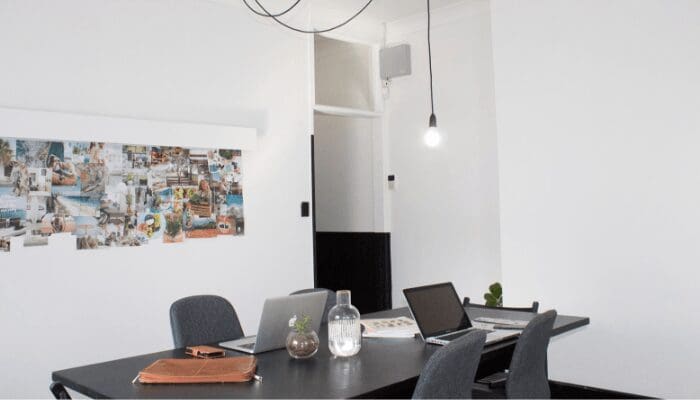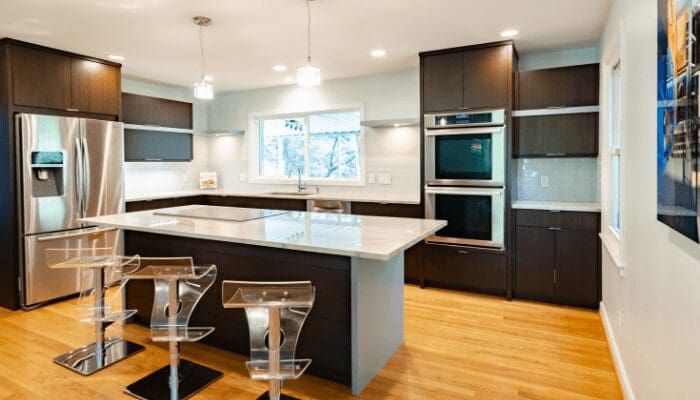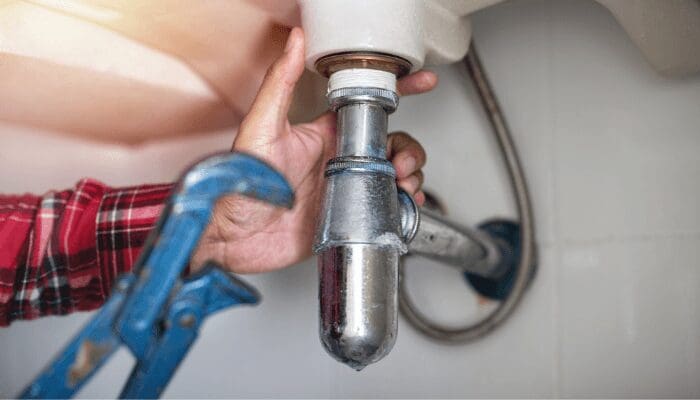Your 9-Step Plan to Building Rental Income Into Your Retirement Plan
- Published on
- 8-9 min read
-
 Christine Bartsch Contributing AuthorClose
Christine Bartsch Contributing AuthorClose Christine Bartsch Contributing Author
Christine Bartsch Contributing AuthorFormer art and design instructor Christine Bartsch holds an MFA in creative writing from Spalding University. Launching her writing career in 2007, Christine has crafted interior design content for companies including USA Today and Houzz.
Close your eyes and picture yourself spending the rest of your days kicking back on the beach sipping frothy tropical cocktails while moola keeps on rolling right into your bank account.
Earning enough easy money to retire on sounds like an impossible dream—but real estate may just be the way to make that happen.
Own enough rental properties, and the passive rental income they provide will supplement and maybe even surpass your income from traditional retirement accounts.
What is passive rental income?
“It’s what I call wake-up money, because when I wake up, I get paid without my needing to do anything,” says Brad Korb, a top Los Angeles agent and investor who owns 11 buildings and over 80 doors.
“My definition of passive rental income is owning a paid-off rental property that’s filled with tenants who hand you rent checks every month, while you do nothing beyond owning the property.”
Sounds perfect! But passive rental income is not completely free money—there’s no such thing.

Follow these 9 steps to get there
It takes a lot of legwork and financial planning to find, purchase, fill, and pay off your rental properties before you reach the Easy Street of passive rental income.
Plus, the owner of the rental properties, you’re the landlord. This means you’ll occasionally need to handle maintenance calls and administrative tasks like accounting, or collecting the rent—unless you hire someone to tackle those tasks for you.
But once you’ve got your system in place, you’ll soon be earning passive rental income with little to no effort on your end.
Read on to find out how.
Step 1: Build a solid investment team
If you’ve got little experience in real estate beyond buying your own home, your first step needs to be assembling a team of experts experienced in real estate investing.
Partner up with a real estate agent
The first member of your team needs to be a savvy real estate agent experienced in finding ideal rental properties—which takes some knowhow (see step 5). That experience also means they’ll know how to handle the subtle differences between buying a primary residence and purchasing an investment property.
Plus, agents currently assisting investor clients—or actively investing themselves—will have a vast network of other experts you’ll need on your side including seller’s agents, contractors, financial planners, CPAs, and rental property lenders.
Join an investors club to make more connections
If you’re serious about making serious money in rental properties, you should join a local real estate investment club ASAP.
“Real estate investment clubs are basically social networking groups and they’re a great place to learn from other investors like yourself,” says Steve Behringer, a senior broker with Kruse Acquisitions and private real estate investor who currently owns 68 single-family rental houses.
“They usually meet once a week or so, and charge minimal fees like $10 or $15 per meeting. It’s worth it because they bring in knowledgeable speakers who talk about things like seller financing, how to buy with a minimum down payment, or how to find affordable, reliable contractors.”
If you start attending meetings like these before buying your first rental property, you’ll meet plenty of people willing to advise, mentor, or partner with you. Plus, you’ll learn a lot that’ll help you avoid making costly newbie mistakes.
Step 2: Develop your property investment strategy
Mortgage companies aren’t anxious to lend to inexperienced investors who haven’t done their homework. So, the smart play is to put together your financial plan based on sound investment strategies and input from your team of experts.
Research and data go a long way toward boosting lender-confidence in your ability to become a successful investor. Ask your agent to dig up info on:
- Local rent rates
- The best neighborhoods to buy rental houses
- A handful of property prospects
You’ll need to price out how much your monthly and annual expenses will be, such as any HOA dues, potential repair and maintenance costs, insurance expenses, and property taxes.
“Property taxes on a rental house will basically be the same as you’re paying on your personal residence, while insurance will be a little bit more reasonable on an income property. It’ll maybe be 75% of what you’re paying for your own home insurance,” says Korb.
Put all this data together, and it’ll provide a clear picture of the potential cash flow you’ll have and the price point you can afford when purchasing your first rental property.
Step 3: Secure financing
The financial data you dig up also needs to go to your CPA or financial planner. With these numbers, they can outline your short-term purchasing power and your long-term profit potential. This data demonstrates that you and your team understand how the rental property game works and will boost your chances for mortgage approval.
“Lenders look at your finances a little closer when you’re borrowing to buy a rental property, because they figure that you’re not going to have it rented all the time,” advises Korb. “Banks will be more conservative with their lending practices for income properties because you’re going to have a vacancy factor of 10% every year, whether you’ve got a single-family home or a multi-unit property.”
The potential for vacancy and other unknowns are why most lenders expect or require rental property borrowers to have a significant amount of cash in reserves. Beyond the capital to purchase the house in the first place, you’ll need to have around six months of rental income set aside. This money is there to cover the mortgage and other expenses whenever you’re between tenants.
It’s also there to help pay for any necessary repairs or refurbishments to get the property ready for new renters.
Your finances aren’t the only factor in securing a rental property mortgage.
“Some lenders will even look at your support system when deciding on your loan if this is your first venture into rental property investment,” advises Korb. “So working with a real estate agent can help your chances at securing a loan because lenders know that agents know the business and will be working to help their clients succeed.”

Step 4: Set up your infrastructure
While your mortgage application is under consideration, take the time to set up your infrastructure so that it’s in place before you purchase your rental house.
Separate your accounts
For your first rental home, you don’t need to form an LLC just yet—however, you should set up a separate bank account to handle your investment property transactions.
“I would suggest setting up a separate checking account to handle your rental property finances,” advises Korb. “That way, it’s easy to track all of the money coming in from rent, and going out to pay the management company and so on.”
This investment property-only account is the perfect place to keep your cash reserves, provides a place to deposit rental income, and keeps any rental property maintenance expenses separate. All of which will help when you report your rental income and deductions on your taxes.
Enroll in a rent payment service
When you’re starting out with just one property, you may be able to get away with collecting the rent in person. But if your plan is to build up a portfolio of multiple rental properties, it makes sense to enlist the services of a rent payment service.
Hiring a payment service will make it easier for your tenants to pay, and will also make your record-keeping a bit easier.
Alternatively, hire a property manager
You won’t need a payment service if you’re planning to hire a property management company instead.
They will take care of rent collection for you and stay on top of maintenance repair requests and can even handle finding and vetting new tenants whenever your renters move out.
Step 5: Find the right rental property to purchase
One of the best benefits of working with an investment-property experienced agent is that they can help you find the right rental home in the best neighborhoods. But that doesn’t mean you can’t keep your eye out for a good buy, too.
Consider real estate wholesalers
While getting educated at your real estate investment club, you may just learn of a good deal on a rental property from real estate wholesalers who also attend these meetings.
Wholesalers are in the business of finding sweet deals on off-market home sales because they know investors are willing to pay a small finder’s fee for the info should the sale go through. That’s because investors know they can save $10,000 or more if they can buy before a house goes on the market.
You might even find a bargain property at bank auctions of foreclosed-on homes, or by scouring the internet for deals on government-owned homes.
Never skip the inspection
But don’t let the lure of a good deal tempt you into buying a property without having it inspected first.
“Always do a home inspection on the rental property that you’re buying, that way you know how to budget for upcoming maintenance expenses,” advises Korb.
“The inspection report will tell you the age and condition of the roof, the plumbing, the sewer, and the electrical wiring. Those are your four high-cost items that have the potential to be a major expense down the line.”

Step 6: Prep the property
Once the house is yours, it’s time to get it ready for your first tenants. But don’t go overboard on unnecessary improvements.
Remember, you’re not the one living in the house—and you’re not even flipping it—so you don’t need high-end finishes or upgrades to increase the home’s value.
But don’t skimp too much, or the cheap materials won’t stand up to the wear-and-tear of renters. After all, a tenant won’t take care of a house as well as a homeowner would.
So, instead of picking finishes that look good, put the functionality and durability of your material selections first. Not sure which finishes to pick? Check out what other landlords are putting in their properties.
“Make sure you go around and visit your competition. Go look at other houses for rent to see what the condition is inside,” advises Behringer.
“You’ll find out that you don’t have to have a total rehab before bringing in a tenant. In fact, for the average investor just starting off, it may be better to buy a move-in ready property that doesn’t need any rehab work.”
Step 7: Rent out your rental property
Now that the house is ready, all you need is some renters.
Figure out your monthly rent
But before you can line up your tenants, you first need to set the rent. For that, you can apply the 1% rule.
This guideline advises that the amount of rent you charge should equal at least 1% of the home’s value. So, if the house is worth $150,000, 1% of that is $1,500 a month in rent.
But note: “The 1% rule doesn’t always hold true. With smaller, less expensive houses, you can get better than 1%, while with larger, more expensive homes it’s harder to hit that 1%,” says Behringer. “However, It does keep you away from buying a house that’s too big or expensive, because you’re not going to charge $5,000 in rent for a $500,000 house. People who can afford that are simply going to buy a house.”
Research is your best bet to finding the sweet spot for your rental rate. Scope out the area and find out what nearby apartment complexes and rental homes are charging for properties similar in size and condition.
Just keep in mind that you can charge a bit more for a two-bedroom house with more square-footage and a yard than you’d get for a two-bedroom apartment.
With your rent rate set, you’re ready to list your property for rent, which your property management company can handle for you if you’ve hired one.
Market the property to renters
If you’re doing it yourself, you can list your rental property online at any number of rental listing companies.
Since you’re renting out a solo property, you may need to spring to have the place professionally staged and photographed for the listing images. But the good news is, you can use the same photos each time you rent the house out—unless you’ve made any drastic changes to the property.
The higher the quality of your listing photos and your listing description, the higher your chances of getting a quality tenant into your property.
Vet your candidates
It’s every landlord’s nightmare that they’ll wind up with a renter who’ll trash the place. So before you lease out your house, make sure you vet your potential tenants first.
“We check all references and do a full credit check on potential tenants when they submit their rental applications. We find out what their credit looks like, if they’ve been paying their bills on time, if they’re really employed where they say they are, and all of that,” advises Korb.
“If someone doesn’t have great credit, think twice about accepting them as a tenant. You don’t want to rent to someone who won’t pay their rent on time or someone who can’t afford to pay for any financial damage they do to your property.”

Step 8: Maintain your property
Your new tenants moving in is a sure sign that you’ve almost achieved the dream of passive rental income. All you’ll need to do is collect the rent checks, and handle any minor maintenance issues that arise.
And if you’ve hired a property management company, you won’t even need to worry about collecting rent, making repairs, or even any bookkeeping. However, you will need to give your management company the freedom to spend some of your money on any maintenance emergencies that arise.
“Most management company contracts include language to give them carte blanche to spend maybe $1,000 to $2,000 without prior approval from you. They need that authority to avoid extensive property damage in emergency maintenance situations, like roofing issues or a plumbing leak,” advises Korb.
“Since I’m earning income from so many properties, I give my management company carte blanche to spend whatever they need to spend on maintaining them. And the companies I work with have never abused that.”
Now that all the financial details are handled, you can relax and enjoy the passive income…
Although, you can’t expect to retire off of the income of just one rental property.
Step 9: Building your investment property portfolio
It takes a lot of work to find, buy and rent out one rental property, and the money you’ll earn from the rental income (after paying the mortgage, etc.) isn’t enough to make the hassle worth it.
However, now that you’ve got your team, financing, and infrastructure in place, it’s easier to add a few more rental properties to your retirement portfolio. Within a few years of successfully renting out your first house—you’ll be ready to buy the next one with the proceeds from the first.
The equity of one property fuels more purchases
While your fixed-rate mortgage stays the same each year, inflation allows you to increase how much you charge in rent each year—typically by around 5% annually. This means that every year your income increases while your expenses stay relatively the same.
Plus, the longer you make mortgage payments, the more money goes towards paying down your principal loan balance rather than toward interest. The more debt you pay off, the more equity there is in your rental properties.
Real estate is also an appreciating asset—which means that your investment property will probably be worth more than you paid for it several years down the line. The more it’s worth, the greater the amount of equity you can borrow against. With a home equity line of credit (HELOC) you can pull out the money you’ll need for a down payment on a second property.
Use the rental property domino effect
Now you’ve got two houses that are appreciating, your mortgage debts are decreasing with every loan payment, and your rental income continuously increases.
In a few more years, you’ll be able to pay off the HELOC on the first property. Then you can take out another on the second property to help finance your third, and so on.
However, you can reach a point, where the number of properties you own will change the way you strategize your rental property portfolio.
“After I hit 10 rental properties, I couldn’t get a 30-year fixed mortgage anymore,” advises Behringer. “At that point, lenders consider you a professional investor, so you’ll have to switch to getting a commercial loan.”
Are you ready to become a real estate rental property tycoon?
The appeal of passive rental income is enough to entice even the most risk-averse retirees into trying their hand at becoming a real estate investor.
While it’ll take a lot of effort to get started in rental property investing, once you’ve got your team, financial backing and infrastructure in place, you’ll have all the tools you need to build passive rental income into your retirement portfolio.
Header Image Source: (Nichlas Andersen/ Unsplash)
